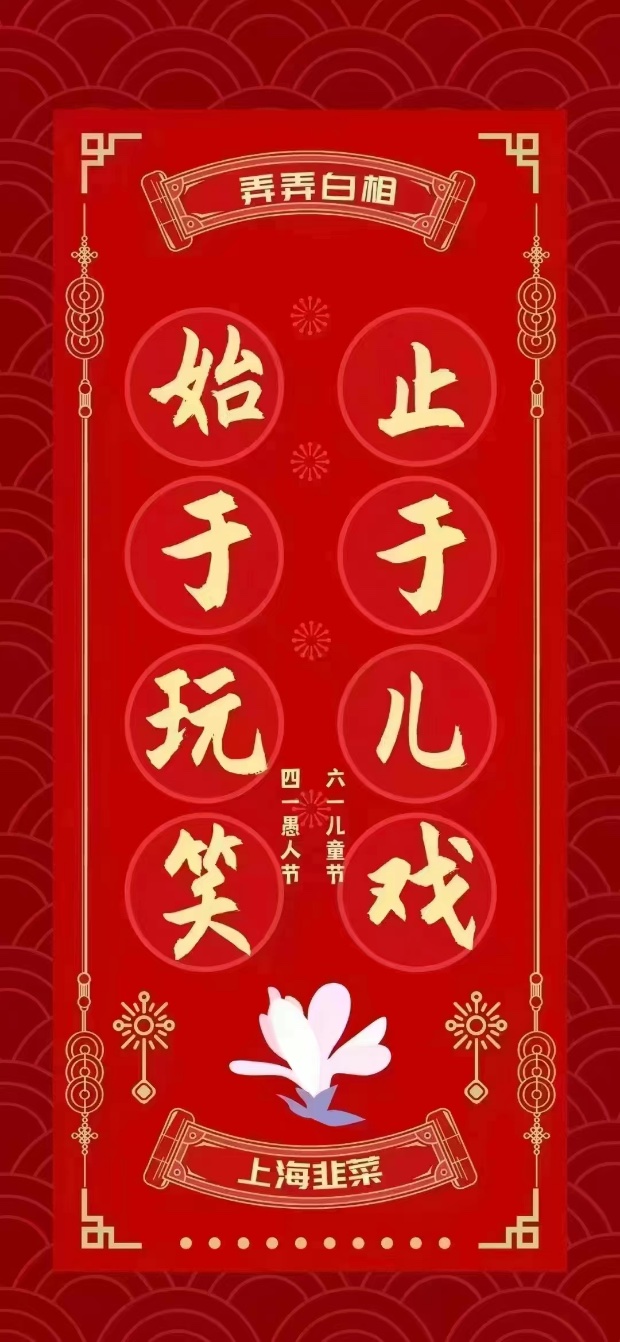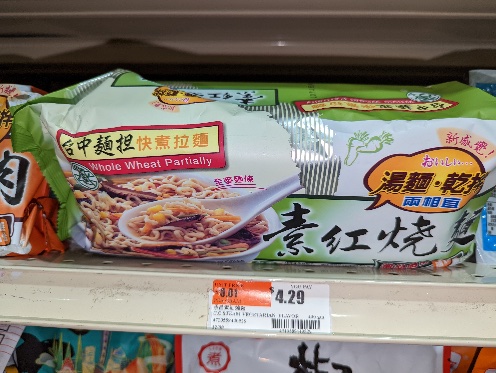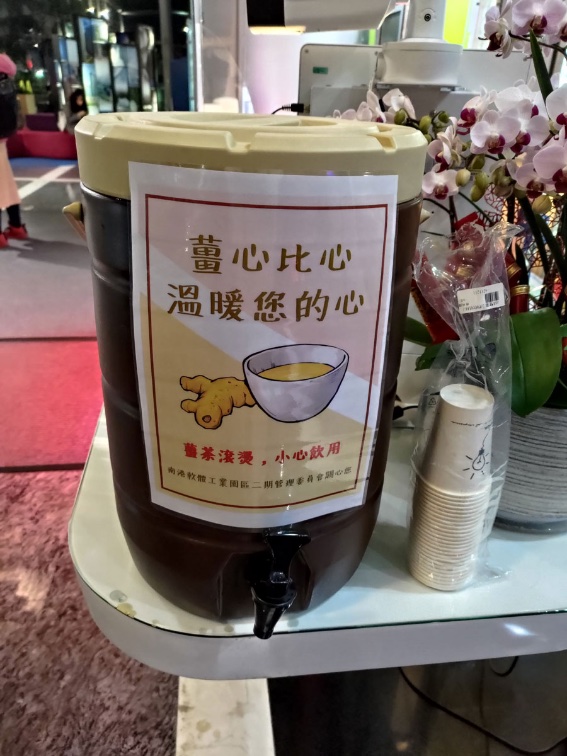Archive for Language and food
June 6, 2022 @ 3:11 pm· Filed by Victor Mair under Language and culture, Language and food, Language and history
Called Duānwǔ jié 端午節 / 端午节 in Chinese, this year (2022) it occurred on Friday, June 3.
Below, I will discuss in detail the names, origins, and customs surrounding this widely and exuberantly celebrated festival. Unfortunately, recently there has been some controversy over how to greet people on this day. There seems to be a lot of online discussion as to whether
Duānwǔ jié kuàilè
端午節快樂
"Happy Duanwu Festival!"
or
Duānwǔ jié ānkāng
端午節安康
"[May your] Duanwu Festival [be filled with] well-being"
is the appropriate greeting for the festival, including debate about the more recent use in China (less so in Taiwan) of the latter.
Read the rest of this entry »
Permalink
June 3, 2022 @ 4:15 pm· Filed by Victor Mair under Language and food, Language and politics, Neologisms, Topolects
Tension over the prolonged pandemic lockdowns in Chinese cities is growing. Thus violence has erupted even in Beijing, where we get scenes like this in the suburb of Yanjiao, 21 miles east of Tiananmen, where workers are demonstrating for the right to travel to their jobs in the city, with continuous cries of "jǐngchá dǎ rén 警察打人" ("the police are beating people"). But it is Shanghai where the citizens have suffered most grievously and for the longest period of time. Although the government has announced the lifting of the lockdowns, many of the most obnoxious mandates (e.g., repeated, frequent nucleic acid testing) are still being enforced. All of this has led to extreme cynicism and a greater willingness to confront the authorities. Some of these sentiments are conveyed on this card where, naturally in the land of the most severe censorship in the world, they must employ clever indirection, which I shall try to explain below:

Read the rest of this entry »
Permalink
June 2, 2022 @ 10:00 am· Filed by Victor Mair under Etymology, Language and food, Toponymy, Transcription
The ambiguity of how to pronounce 咀 (jǔ, zuǐ) in toponyms (see this recent post) is mirrored by the situation regarding 堡. Is it bǎo, bǔ, or pù?
bǎo
bǔ
- (often in placenames) town or village with walls
- 吳堡 / 吴堡 ― Wúbǔ ― Wubu (county of Yulin, Shaanxi, China)
pù
Used in place names, as a variant of 鋪/铺/舖 (pù, “courier station"
- (Zhengzhang): /*puːʔ/
(source)
Read the rest of this entry »
Permalink
May 31, 2022 @ 9:18 am· Filed by Victor Mair under Etymology, Language and food
What with the high heat (in the 90s) these days, at least here in Philadelphia, and all the talk of Semitic roots, especially those beginning with one or the other of the five Proto-Semitic sibilants, I feel an impulse to write about "sherbet".
Already from the time I was a little boy, I sensed that "sherbet" had an Oriental flavor, and I undoubtedly looked up the etymology of the word by the time I was in high school. But the resources for studying the etymology of such words were not so advanced and readily available as they are now, so I probably didn't get much beyond realizing that the word was borrowed from Turkish into Western languages.
Now, we have easy access to a much fuller and deeper story of the origins and development of "sherbet". Here I quote the complete entry for it from the American Heritage Dictionary of the English Language, 5th ed.
Read the rest of this entry »
Permalink
May 14, 2022 @ 11:16 pm· Filed by Victor Mair under Language and food
Ingenious menu on the window of a restaurant:

(source)
Read the rest of this entry »
Permalink
April 25, 2022 @ 11:03 pm· Filed by Victor Mair under Language and advertising, Language and food, Lost in translation
Package on a grocery store shelf:

Read the rest of this entry »
Permalink
April 4, 2022 @ 6:43 am· Filed by Victor Mair under Etymology, Language and food, Writing systems
There is a clear resemblance between the Sumerian and the Chinese glyphs for "beer", both of which depict a jug with a pointed bottom and an extended narrow neck (here, here). It's interesting that the oracle bone forms (second half of second millennium BC) for 酒 all have the three drops of water as a semantophore, whereas the bronze inscriptional forms (first millennium BC) and even some of the seal forms (latter part of the first millennium BC) lack the three dots for liquid, making the character for jiǔ 酒 identical to that for yǒu 酉 ("an ancient vase used in making and storing fermented millet liquors") — for all these forms, see here.
Wanting to investigate more deeply the Sumerian side of the equation, I asked my colleague, Philip Jones, a Sumerologist at the University of Pennsylvania Museum, for more information about the Sumerian word for beer, kaš. He replied:
Read the rest of this entry »
Permalink
March 27, 2022 @ 4:08 pm· Filed by Victor Mair under Borrowing, Etymology, Historical linguistics, Language and food, Language and technology
VHM somewhere in Ukraine, probably late summer 2002:

Read the rest of this entry »
Permalink
March 5, 2022 @ 9:41 am· Filed by Victor Mair under Etymology, Language and food, Writing systems
The story begins here — "Polished pan cake" (2/20/22) — which shows two dessert items on a menu. In Chinese, one is described as a guō bing 锅饼 (lit., "pot / pan cake / pie") and the other is called a jiānbing 煎饼 (lit., "fried cake / pie"), two different kinds of bǐng 饼.
In the English translations on the menu, those two different varieties of bǐng 饼 are respectively rendered as simply "cake" and "pan cake". I won't go into their fillings, since they have more or less been adequately covered in the earlier post.
We have the testimony of Charles Belov who ate one of the latter at the very same restaurant where the menu came from and declared that "pan cake" turned out to be a fried glutinous rice ball partially covered in granulated sugar. A commenter to the post stated, "My understanding of 饼 was always just 'it means round food'".
I wonder where / how he got that "understanding".
Read the rest of this entry »
Permalink
March 3, 2022 @ 11:24 pm· Filed by Victor Mair under Books, Language and culture, Language and food
From Miffy Zhang Linfei:
I went to Chicago over the weekend, and look what I found in a small European vintage shop named P.O.S.H.

Read the rest of this entry »
Permalink
March 3, 2022 @ 10:54 pm· Filed by Victor Mair under Language and biology, Language and food, Lost in translation
From John Dankowski via Dave Thomas:

Read the rest of this entry »
Permalink
February 26, 2022 @ 10:08 pm· Filed by Victor Mair under Idioms, Language and food, Puns
[This is a guest post by Mark Swofford]
Those who have never lived in northern Taiwan during the winter may scoff at the idea that 11 °C (52 °F) can seem miserably cold. But cold it is here nevertheless, especially during a week of seemingly endless rain.

Read the rest of this entry »
Permalink
February 26, 2022 @ 3:41 pm· Filed by Victor Mair under Esthetics, Etymology, Evolution of language, Language and economics, Language and food
Figuring out the etymologies of words has always been one of my favorite things in life, almost as much as eating flavorful food. All the way back in second grade of primary school, my Mom gave me a Merriam-Webster dictionary, and I treasured it above all my other belongings because of its etymological notes. Much later, when The American Heritage Dictionary of the English Language became available, I was euphoric, since then I was able to trace words to their Indo-European and Semitic roots.
In between, though, I came up against the pseudo-science of Chinese character etymology, which should better be called "Chinese character construction". Despite almost universal misunderstanding to the contrary, Chinese characters have no direct connection to the sounds and meanings of words. If you want to analyze the history of the development of how individual Chinese characters acquired their shapes and sounds, all well and good, but that's a different matter from how the sounds and meanings of Chinese words evolved through time. Always and ever, I emphasize over and over the primacy of sounds for conveying meaning, the same as with all other living, spoken languages. The writing systems are only there as a makeshift, always catching up and inevitably imperfect means for recording the sounds of the languages.
Read the rest of this entry »
Permalink






